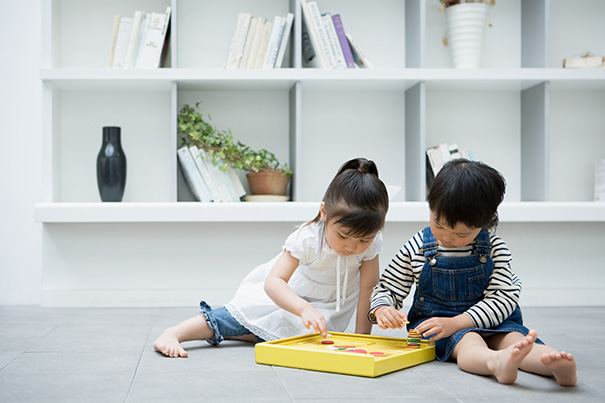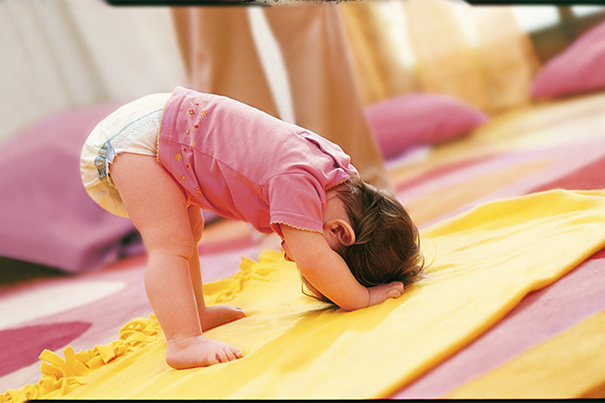
Understanding Parallel Play in Toddlers
Play is an important part of your child’s healthy development. When your toddler encounters other kids you might notice that he or she tends to play alongside, rather than with, the others. This is called parallel play and it’s perfectly normal for this stage of play development.
Read to see some examples of parallel play, what parallel play is and how it helps develop your toddler’s social play.
What Is Parallel Play?
Parallel play is when two or more toddlers play near one another or next to one another, but without interacting directly. They will sometimes be observing and even mimicking the other child.
It’s one of the six stages of play that most children pass through on the way to developing the social skills they need to interact with other kids in the way you might think of as ‘proper’ playing.
What Is an Example of Parallel Play?
During toddlerhood, imitation and pretend games are common. An example of parallel play might be your child imitating what a playmate is doing while not seeming to interact with him or her directly. So, if the other child is playing with blocks, your toddler may decide to play with blocks too.
Keep in mind that your little one doesn’t yet understand the concept of sharing. For example, if there is only one toy car or play figure and your toddler sees a playmate playing with it, he or she may decide to try taking it. This could lead to a conflict that you’ll need to help resolve.
Now that your child is in the stage of toddlerhood sometimes referred to as the terrible twos, you may find that outbursts or conflicts like this are becoming more frequent.
A good way of dealing with a squabble over a preferred toy could be to distract your child and/or offer another toy. This strategy often works with toddlers around this age, because they still have a fairly short attention span.
Why Is Parallel Play Important?
Play is important for your toddler’s development. It helps your child develop all sorts of skills including
Although it might seem odd to see two children playing side-by-side without communication, parallel play is an important stage in the process of learning about social play and cooperation with others.
As your child matures, he or she will start playing more collaboratively, actively and imaginatively.
How Can You Encourage Parallel Play?
Here’s how you can encourage and help your toddler with parallel play:
What Is the Age Range for Parallel Play?
Parallel play is most common between the ages of 2 1/2 and 3 1/2; but children develop at their own pace so it might start a little earlier or later than this.
Before that, your toddler or baby probably just played ‘alone’, without showing any interest in what other children are doing nearby.
At around 2 years old, toddlers often start watching other children play, but without joining in themselves. This is a sign that the stage of parallel play could start sometime in the following weeks or months.
Later, between the ages of 3 and 4, you child will start to engage more with other children. Even during this next stage, known as associate play, your toddler won’t be interacting fully. For example, several children might be playing on the same piece of playground equipment but all doing their own thing – for example, climbing, sliding down the slide or swinging.
The fully interactive stage of play, known as cooperative play, usually starts after around the age of 4 years.
What Are the 6 Stages of Play?
The six stages of play, and the approximate ages when they can occur, are:
Keep in mind that the age ranges given here should only be taken as a rough guide, as all children develop at their own pace. If you have any questions or concerns about your toddler’s development, speak to your health visitor or your child’s doctor.
The Bottom Line
Parallel play is just another step in your child’s healthy development. Even though your toddler is not interacting with his fellow playmates yet, playing alongside them is normal and means that your little one is already learning the basics of social play.
Before long, you’ll notice your toddler taking more of an interest in other kids and what they’re doing, whether it’s on a playdate, at nursery school or the playground. You’ll love seeing how your little one’s world expands with each new friendship and adventure.
The information in this article is based on the expert advice found in trusted medical and government sources, such as the National Health Service (NHS). You can find a full list of sources used for this article below. The content on this page should not replace professional medical advice. Always consult medical professionals for full diagnosis and treatment.







